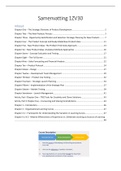Summary
Summary ISE New Products Management, ISBN: 9781260575088 Product Innovation Processes (1ZV30)
- Course
- Institution
- Book
Summary of the lecture notes, slides, and course material for the course 1ZV30 in the academic year 2019/2020.
[Show more]




